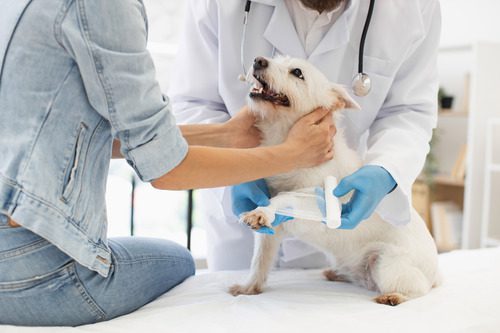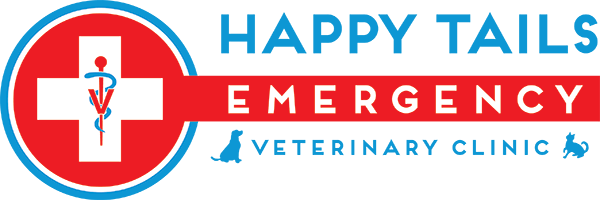Burns in Dogs: What You Need to Do Next

When your dog experiences a burn injury, whether from fire, chemicals, or hot surfaces, it can be both distressing and frightening. Burns in dogs require quick and careful attention to ensure that the injury does not worsen and that your pet’s recovery is as smooth as possible. Below, we’ll guide you through the key steps in identifying, assessing, and responding to burns in dogs. We’ll also explain when it’s time to seek emergency veterinary care to ensure your dog receives the best treatment. Keep reading to learn how to protect your pet and manage burn injuries effectively.
Recognizing Burns in Dogs: Symptoms to Look For
Burns in dogs can vary in severity, ranging from mild skin irritation to serious, life-threatening injuries. Knowing how to spot the symptoms of burns in dogs is crucial in preventing further harm. There are three main categories of burns based on their severity: first-degree, second-degree, and third-degree burns.
First-Degree Burns
First-degree burns are the mildest form of burn injury. They affect only the outer layer of skin, leading to redness, swelling, and mild pain. Affected areas may feel warm to the touch and may appear slightly red.
Second-Degree Burns
Second-degree burns penetrate deeper into the skin, affecting the outer and underlying layers. This type of burn can cause blisters, more severe pain, and swelling. The area may also appear moist or have a wet-looking appearance due to the formation of blisters.
Third-Degree Burns
Third-degree burns are the most severe and can cause significant damage to all layers of the skin, including tissues beneath the skin. These burns can appear white, charred, or leathery and are often not painful due to nerve damage. However, the surrounding area will typically be painful.
Steps to Take Immediately After a Burn Injury
If your dog sustains a burn, it’s important to act quickly and carefully. While the immediate response may vary depending on the severity of the burn, there are general steps to follow.
1. Move Your Dog Away from the Source of Injury
The first step is to ensure that your dog is no longer in danger. If the burn was caused by fire or hot surfaces, quickly move your pet away from the source of heat to prevent further exposure to the burn.
2. Cool the Affected Area
For minor burns, you can cool the burn by gently applying cool (not cold) water to the area. This can help reduce pain and stop the burning process. Do not use ice or very cold water, as this may cause additional tissue damage. For more severe burns, avoid applying water directly to the wound and get professional help as soon as possible.
3. Assess the Severity of the Burn
Next, determine how severe the burn is by examining your dog’s skin and behavior. If the burn is minor, you may be able to provide initial care at home. However, severe burns, blisters, or third-degree burns require immediate veterinary attention.
4. Prevent Licking or Scratching
Dogs often try to lick or bite at injuries, which can introduce bacteria and worsen the burn. You may need to use an Elizabethan collar (cone) to prevent your dog from licking the affected area until you can get veterinary assistance.
When to Seek Emergency Veterinary Care
It’s important to recognize when the situation requires urgent veterinary intervention. If your dog’s burn is more than a mild first-degree burn, you should seek professional help immediately. The following are signs that require emergency veterinary care:
- Burns covering a large area of the body
- Severe pain or signs of shock (e.g., rapid breathing, pale gums, weakness)
- Burns located near sensitive areas, such as the face, paws, or genitals
- Presence of blisters or open sores
- Burns caused by chemicals, electrical shock, or inhalation of smoke
Burn injuries can quickly lead to complications such as infection, dehydration, and shock, making timely veterinary treatment crucial.
How Your Veterinarian Treats Burns in Dogs
When you bring your dog to Happy Tails Emergency Veterinary Clinic for a burn injury, your veterinarian will assess the severity and take steps to prevent infection, manage pain, and promote healing.
Wound Cleaning and Dressing
For second and third-degree burns, your veterinarian will carefully clean the wound to remove any debris and bacteria. This may involve gentle debridement (removal of dead tissue) to prevent infection. The burn area will then be dressed with a sterile bandage to protect it from further irritation.
Pain Management
Burns can be extremely painful, so your vet will likely administer pain relief medications to keep your dog comfortable during the healing process. Depending on the severity of the burn, your dog may need injectable pain relief or oral medications to manage discomfort.
Intravenous Fluids
In cases of severe burns, your dog may need intravenous (IV) fluids to prevent dehydration and maintain blood pressure. Burns can result in fluid loss, so it’s essential to ensure your dog stays hydrated during recovery.
Antibiotics and Infection Prevention
Burns are susceptible to infection, so your veterinarian may prescribe antibiotics to reduce the risk of bacterial infections. Proper care and medication will help your dog heal more effectively.
The Importance of Follow-Up Care
After your dog’s initial treatment, it’s important to attend follow-up appointments with the veterinarian to ensure that the burn is healing properly. Your veterinarian will monitor your dog for any signs of infection, address any complications, and update medications as needed.
- Monitoring for Infection: While the burn is healing, keep a close eye on it for signs of infection. Redness, swelling, increased pain, or discharge from the wound can indicate an infection. If you notice any of these symptoms, contact your veterinarian immediately.
- Managing Scarring and Mobility: In some cases, burns may lead to scarring or changes in your dog’s skin, especially for more severe burns. If the burn affects joints or areas that involve movement, your dog may experience limited mobility. Your vet may suggest physical therapy or recommend ways to assist with your pet’s mobility as they recover.
- Nutritional Support: Proper nutrition can speed up the healing process and strengthen your dog’s immune system. Your veterinarian may recommend a special diet or supplements to support recovery during the healing period.
Protecting Your Dog from Future Burns
While burns are sometimes accidental, there are steps you can take to minimize the risk in the future:
- Keep your dog away from open flames, hot stoves, and grills.
- Avoid leaving chemicals or dangerous substances within reach of your pet.
- Use pet-safe heating pads or ensure that hot surfaces are inaccessible to your dog.
- Always supervise your pet around hot surfaces, fire, or when outside in extreme weather conditions.
Seeking Emergency Care for Burns in Dogs
Burn injuries are serious and require prompt attention to minimize damage and ensure recovery. If your dog sustains a burn, it’s important to assess the severity of the injury, cool the burn if possible, and seek veterinary care. If the burn is severe, take your dog to Happy Tails Emergency Veterinary Clinic in Greensboro, North Carolina for immediate treatment. Call us at (336) 288-2688 for fast and professional care. By acting quickly, you can help your dog recover from a burn injury and avoid complications during the healing process.
Recent Posts
About Us
At Happy Tails Veterinary Emergency Clinic in Greensboro, NC, our kind and knowledgeable team is available to provide gold standard emergency vet care for you and your pet. We’re available in the late night and early morning hours during the week, and 24/7 on weekends for your convenience.
